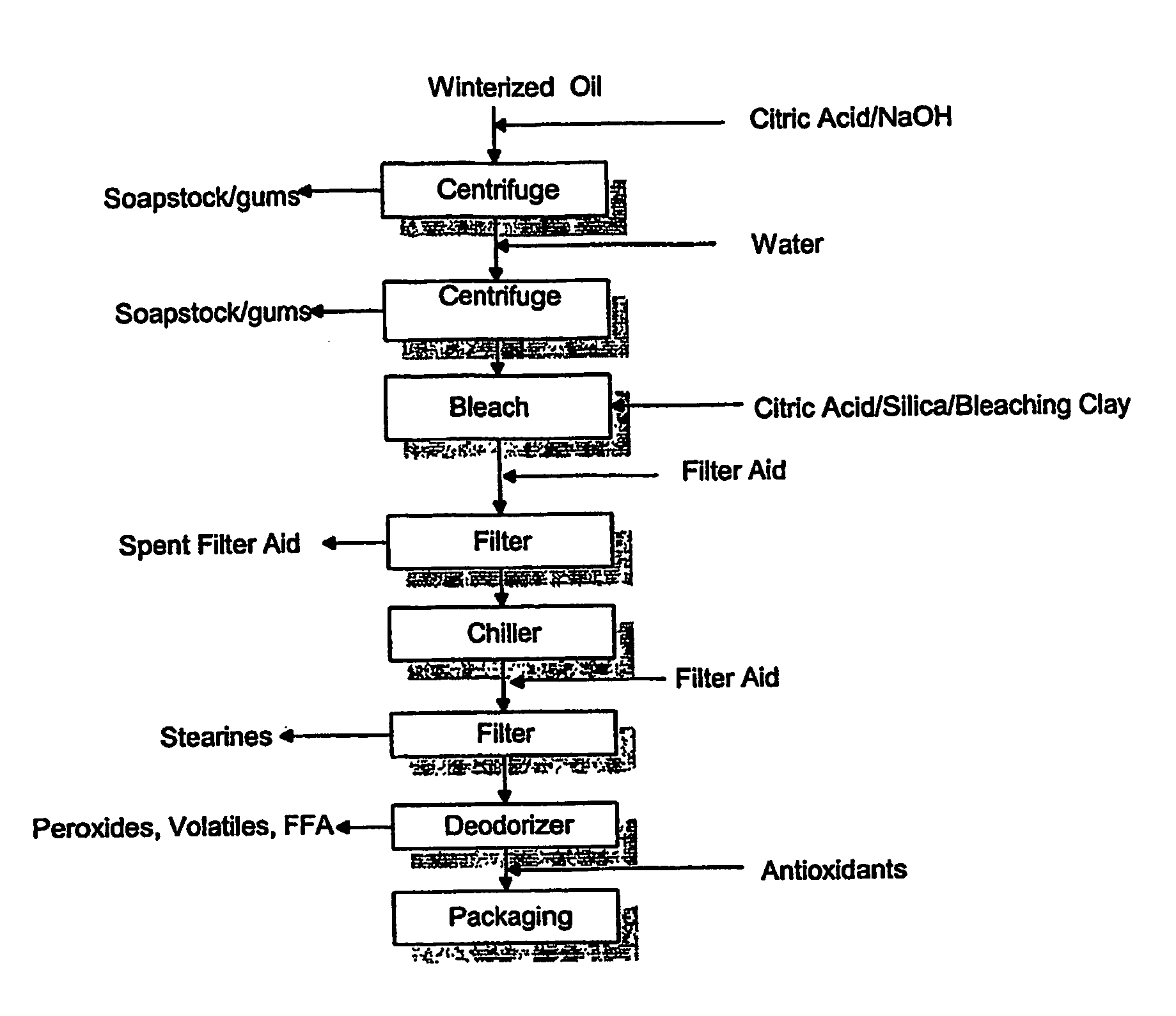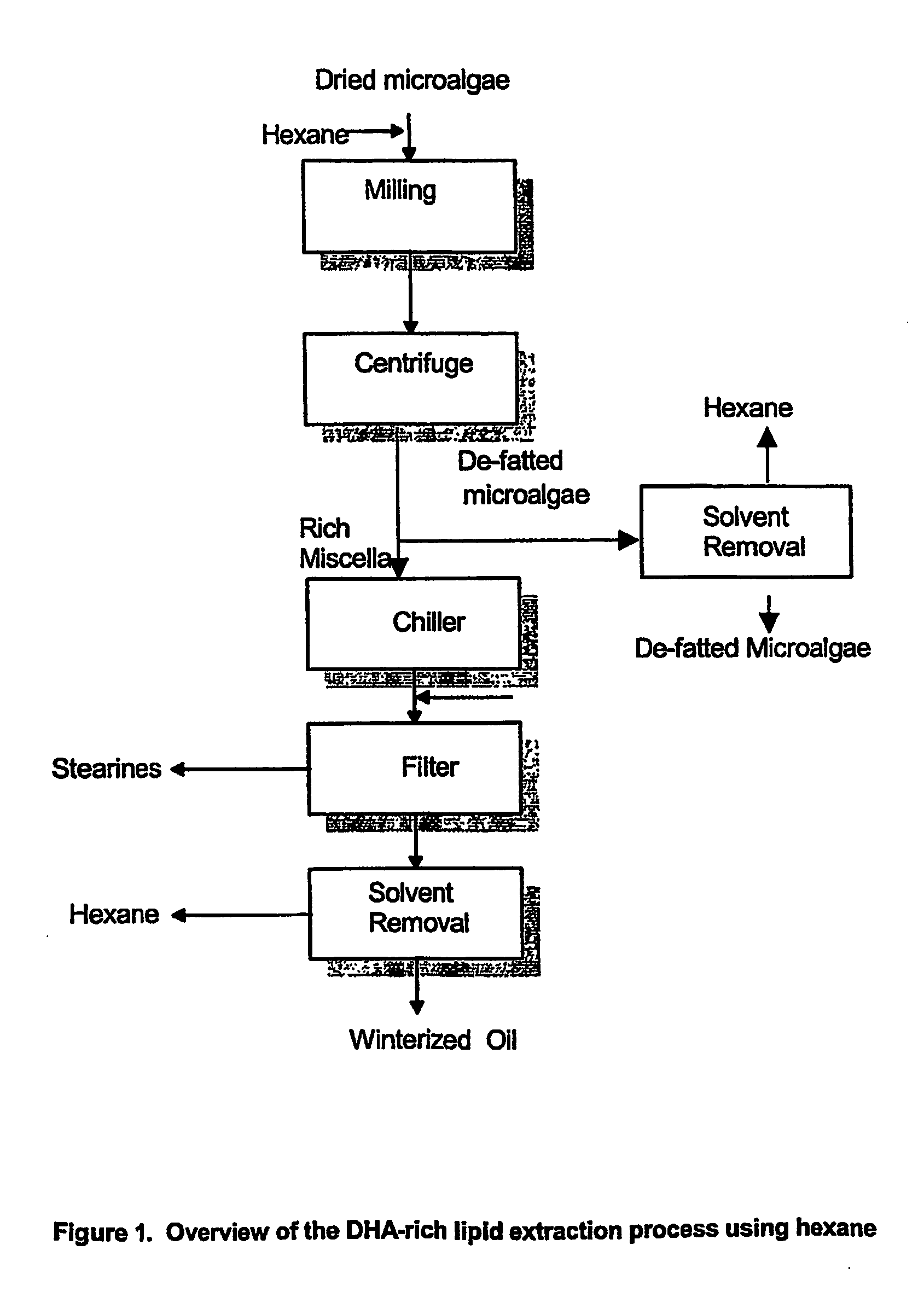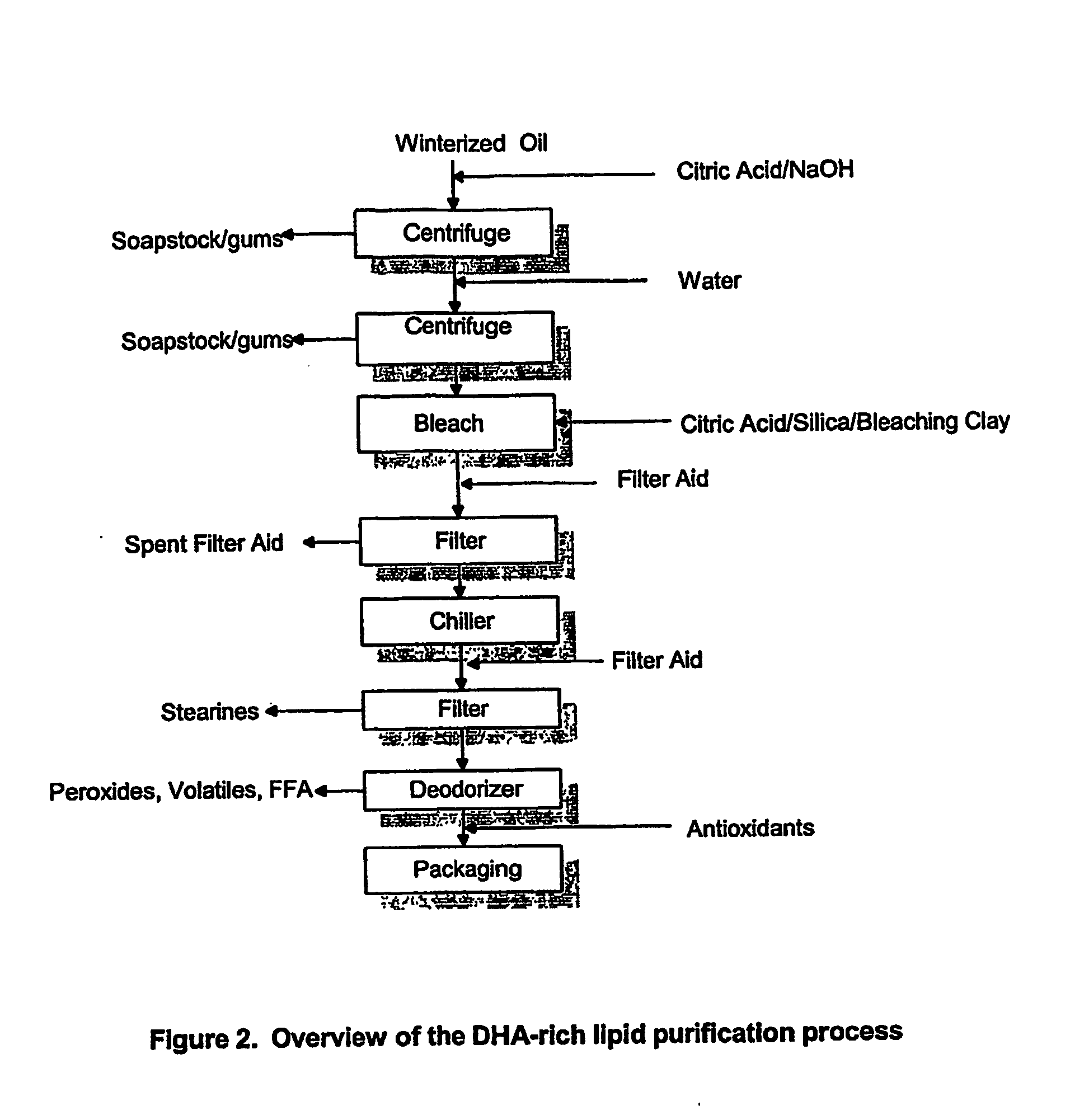Extraction and winterization of lipids from oilseed and microbial sources
a technology of lipids and oilseeds, applied in the field of extraction and purification of lipids, can solve the problems of insufficiently eliminating haze formation in lipids, crystallizing out, and forming haze in products, so as to reduce degumming and less downstream processing
- Summary
- Abstract
- Description
- Claims
- Application Information
AI Technical Summary
Benefits of technology
Problems solved by technology
Method used
Image
Examples
example 1
SUMMARY
[0039] A sample of DHA-rich lipid obtained from Schizochytrium (Sample 1, unwinterized lipid, a.k.a. “high melt”) and an isolated sediment from another DHA-rich lipid obtained from Schizochytrium (Sample 2) were analyzed to determine the nature of the solid phase (Sample 1) and the floc / sediment (Sample 2).
[0040] Unwinterized lipid Sample 1 produced at plant scale (a semi-solid at ambient temperature) was dissolved in 4 volumes of cold acetone and mixed. A solid white powder (approximately 7% by weight) was isolated by filtration through a glass fiber filter. The solid white powder had a melting temperature of 52.4-53.5° C., was shown to be triglycerides (based on a single spot by thin layer chromatography (TLC)), and contained predominantly myristic (26%) and palmitic acids (66%) when analyzed by GLC. This high melting triglyceride fraction contains saturated fatty acids with very little DHA / DPA. The isolated lipid fraction (91% by weight) was an orange-colored liquid at r...
example 3
[0064] A crude extract of Schizochytrium oil was subjected to a variety of winterization procedures in which a lipid composition was extracted from biomass with hexane. The hexane was removed to produce a crude extracted oil having a residual amount of hexane. The extracted oil was then extracted with acetone at a particular acetone / oil ratio and winterized at a particular temperature for a given amount of time. The % residual hexane, acetone / oil ratio, winterization temperature and winterization time were varied in different experiments. The processes were evaluated in terms of filtration time, oil recovery and haziness after two weeks. The details of the experiments and the results are shown below in Table 4.
TABLE 4The levels of tested variables and observationsof acetone-winterized Schizochytrium oilWinterizationOilHazinessExperimentAcetone / Temp.WinterizationFiltrationRecoveryAfter 2No.Hexane %Oil Ratio(C.)Time (H)@ (sec)(%)weeks 111.5536787.8Clear 2210216586.4PPT 3210419587.7C...
PUM
| Property | Measurement | Unit |
|---|---|---|
| temperature | aaaaa | aaaaa |
| temperature | aaaaa | aaaaa |
| temperature | aaaaa | aaaaa |
Abstract
Description
Claims
Application Information
 Login to View More
Login to View More - R&D
- Intellectual Property
- Life Sciences
- Materials
- Tech Scout
- Unparalleled Data Quality
- Higher Quality Content
- 60% Fewer Hallucinations
Browse by: Latest US Patents, China's latest patents, Technical Efficacy Thesaurus, Application Domain, Technology Topic, Popular Technical Reports.
© 2025 PatSnap. All rights reserved.Legal|Privacy policy|Modern Slavery Act Transparency Statement|Sitemap|About US| Contact US: help@patsnap.com



